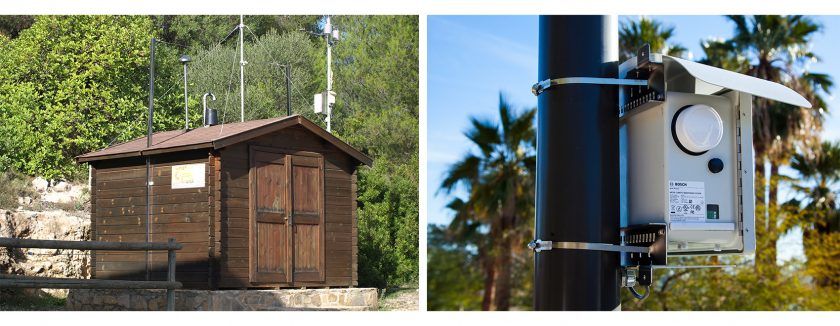Microclimate Monitoring Brings Clean Air Within Reach
More than 95 percent of the world’s population—7 billion people—live in areas with unhealthy air. To address this problem, municipalities need data-driven insights on the sources of pollution—and that requires a sophisticated air quality monitoring system.
With a regional network of intelligent air quality analyzers, a government can accurately see when and where issues occur and form strategies to resolve the situation. But this has been easier said than done.
Historically, air quality monitoring solutions have been bulky, expensive to buy, expensive to maintain, and impractical to adopt for widespread deployment. Additionally, they often cannot provide the critical analytical link between the cause and effect of pollution.
“Traditional air quality analyzers are the gold standard, but the sheer size of them has disadvantages,” explained Mahesh A. Chikodi, General Manager at Robert Bosch Engineering. “They are very costly, and they are not scalable. Conventional analyzers consume too much power and lack the critical back-end analytics to provide actionable intelligence.”
Better Bang for the Buck
Fortunately, there is an alternative to this customary approach. New technologies enable air quality monitoring systems to be a fraction of the size and cost of traditional monitoring stations (Figure 1).

For example, the Bosch Climo monitoring system provides 10-20x more spatial coverage, 100x reduction in size, and 10x cost improvements compared to traditional environment stations.
These modern air quality monitoring systems can also be more cost-effective in terms of lifetime maintenance, thanks to their easily replaceable sensors, remote software updates, and lower power consumption. Reduced cost means that organizations that have been deterred by the expense of conventional systems now have the ability to bring clean air within the reach of their communities.
Plus, modern equipment is easier to deploy than old-style systems, helping reduce upfront costs and making it practical to redeploy equipment as needed.
Most important, these new systems give air quality observers the analytics they need to address problems in real time. The use of IoT-powered remote sensing technologies and major technological advances aid the integration of environmental science, engineering, and IT applications to reduce pollution through continuous monitoring of emissions.
These capabilities offer pollution regulators a number of benefits, including:
- Smarter air quality monitoring. Microclimate monitoring via high-precision sensors provides government officials with 24/7 air quality data. This enables them to issue warnings and alerts locally or regionally.
- Real-time alerts and notifications on ambient air quality can be sent to computers, tablets, and smartphones. Recommendations can be made based on multiple parameters, including air pollution, temperature, humidity, and noise levels.
- Smarter activity scheduling. School districts and employers can offer students and workers the ideal times for outdoor activities based on neighborhood air quality conditions.
- Smarter worker safety. Business and industry have the information they need to achieve air pollution compliance and worker safety requirements. Sensors continuously monitor dust emissions and toxic gases at worksites, and this data can be integrated with worker safety and tracking systems.
Edge and Cloud Computing Combined
Bosch Climo demonstrates the power of these possibilities. This end-to-end air quality management solution built on Intel® technology comprises analytics, data management, visualization software, and high-precision environmental sensor modules (Figure 2).
With these capabilities, Bosch Climo provides true context, improving decision-making abilities. Analytics and algorithms derive valuable air quality telemetric data, and the system enables easy integration with APIs—including local air quality index (AQI) guidelines.
The system uses field-replaceable sensors capable of measuring levels of particulate matter and CO, SO2, NO, and NO2 in parts per billion. That level of accuracy is significant for a compact monitoring unit. Other compact air quality monitors typically measure quality in parts per million.
Bosch Climo also monitors and measures environmental parameters—ambient temperature, relative humidity, sound, and light—and has built-in wireless support for sensor and cloud networks. Meanwhile, all of it is protected in a rugged enclosure that’s dust- and water-compliant for outdoor use.
What’s more, unlike traditional stations that send the data they collect in batches to the cloud, Bosch Climo stations process the data in place. “Processing of the data happens in the box so you can make decisions based on compute happening on the edge,” Chikodi explained.
By combining edge and cloud computing, the system can gather and analyze data in the right place at the right time. This approach minimizes network traffic and power consumption while also ensuring that air quality is monitored continuously, and that pollution managers receive alerts immediately when conditions warrant.
The system also secures that data. When data is moved around the network, it’s protected by built-in data transfer protocols powered by Intel security, which guards against tampering and man-made errors.
Bosch also put a priority on ease of management. Intelligent edge capabilities simplify deployment, serviceability, and integration with existing infrastructure. Over-the-air (OTA) capabilities enable 24/7 real-time monitoring, reduce physical interventions, and eliminate downtime. Plus, system deployment, serviceability, and integration with existing infrastructure is simple, easing deployment and monitoring.
Right Tools for the Job
With the use of edge computing and cloud analytics, modern air pollution monitoring systems can offer pollution controllers real-time, low-cost, and highly localized air quality monitoring that hasn’t been possible until now.
They can provide the critical analytical link between the cause and effect of pollution that often eludes many existing air quality management systems, as well as provide real-time data accuracy, time- and location-based trend analysis, easy-to-use data-gathering tools, in-depth back-end analytics, and low-cost implementation.